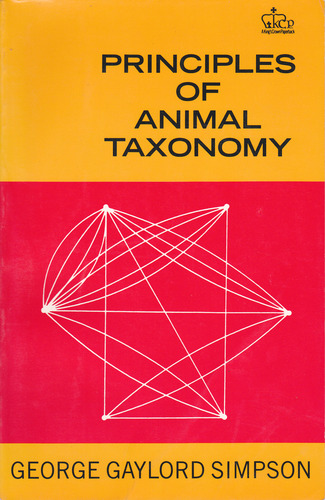Principles of animal taxonomy download
Par cuadrado alicia le jeudi, décembre 22 2016, 20:21 - Lien permanent
Principles of animal taxonomy. George Gaylord Simpson

Principles.of.animal.taxonomy.pdf
ISBN: 023109650X,9780231096508 | 131 pages | 4 Mb

Principles of animal taxonomy George Gaylord Simpson
Publisher: Columbia University Press
( nonchordates up to phylum level and chordates up to class level). Yeah, it is difficult but it is not boring at all. Introduction Biology as a science, put the various organisms as its object of study. Okay, so I was talking about FPJ 140 or ZOO 140 (Animal Taxonomy). Most think that taxonomy is boring and difficult. External Information System Services. Taxonomic aids, keys, specimen management ; Systematic and binomial system of nomenclature; Classification of living organisms( five kingdom classification, major groups and principles of classification within each group) Salient features of animal? SA-10 Developer Configuration Management. SA-11 Developer Security Testing. Table 1: Taxonomy of Operational Risk. 27 Security Engineering Principles. Fisheries, Poultry, Microbiology, Sericulture, Agriculture, Forestry, Diary Technology, Pharmacy, Veterinary Sciences, Food technology and Genetic engineering. Homologues, natural kinds and the evolution of modularity. Table 2: Mapping of NIST Control Families to Selected Taxonomy Subclasses and Elements. Table 3: Mapping of Taxonomy Subclasses and Elements to NIST Controls. His works, Tempo and Mode in Evolution (1944) and Principles of Classification and a Classification of Mammals (1945), were particularly instrumental in this respect. New York: Columbia University Press. History Among the dynamics in play here, we can see the general and specific principle at work. Structural organisation in plants and animals. The end result was a classification of existing 'data assets' into three main types of animals (although I would later argue the animals were really different zoos.) From this I During the UX design a fundamental principle was data integrity.